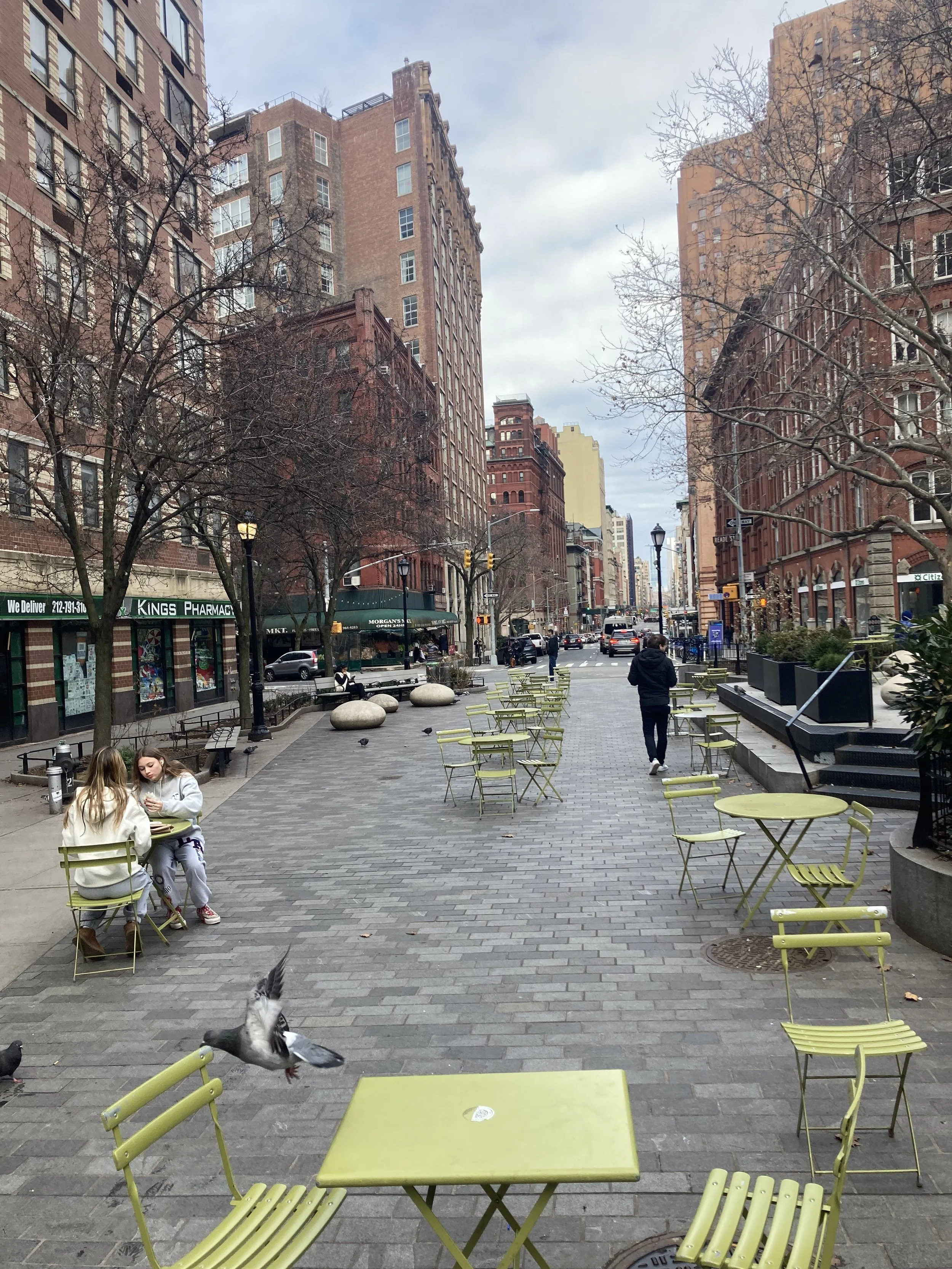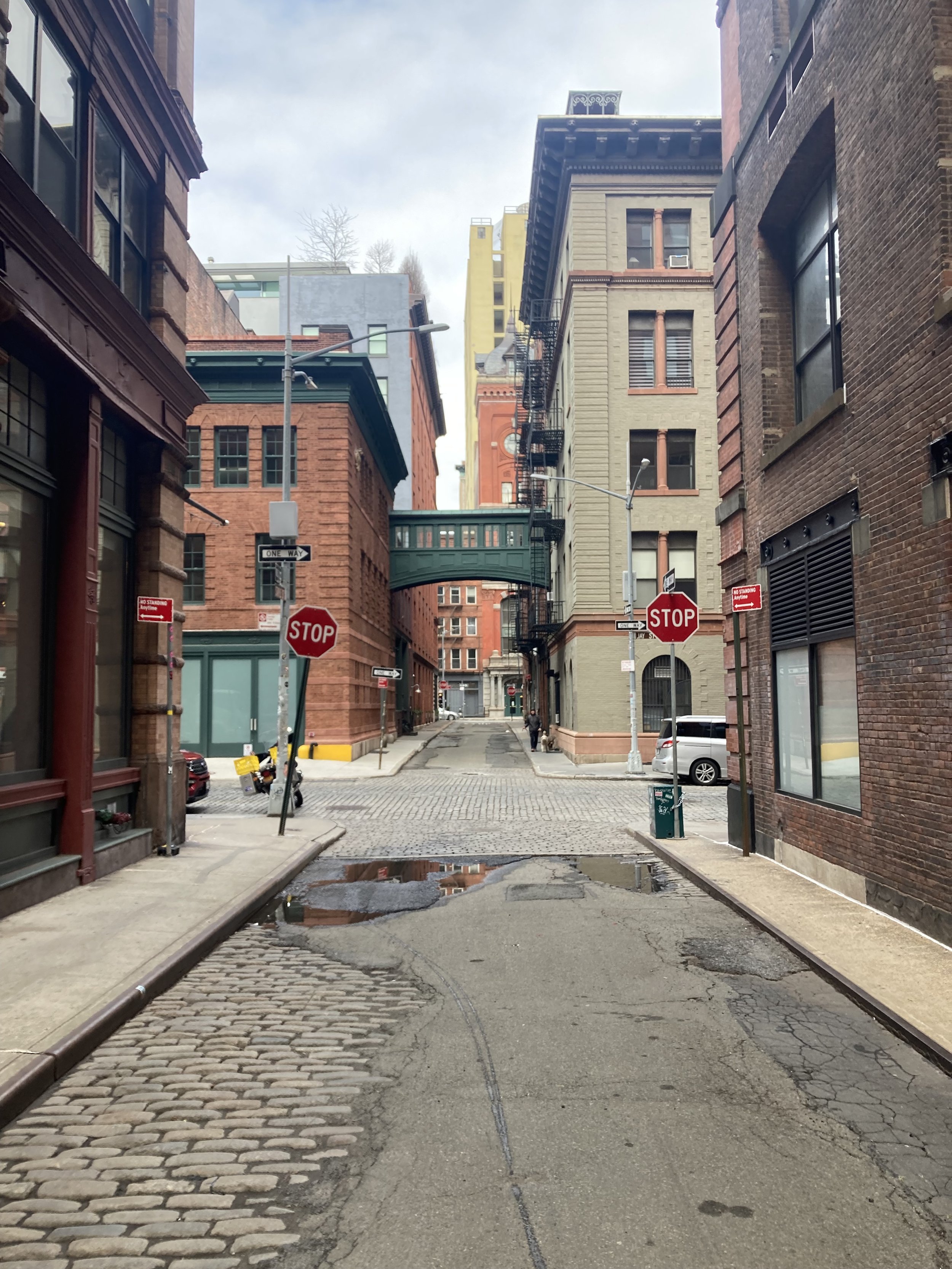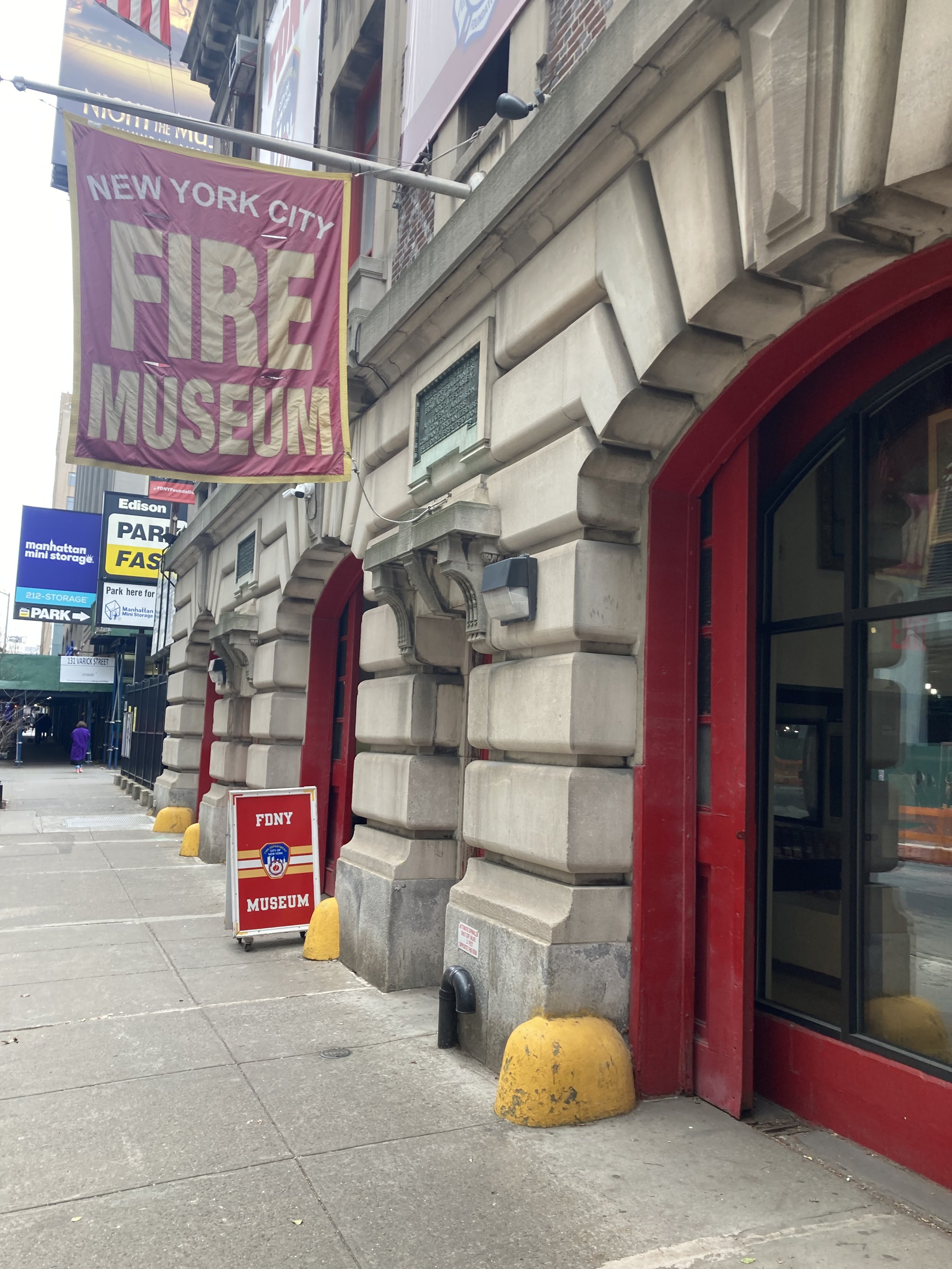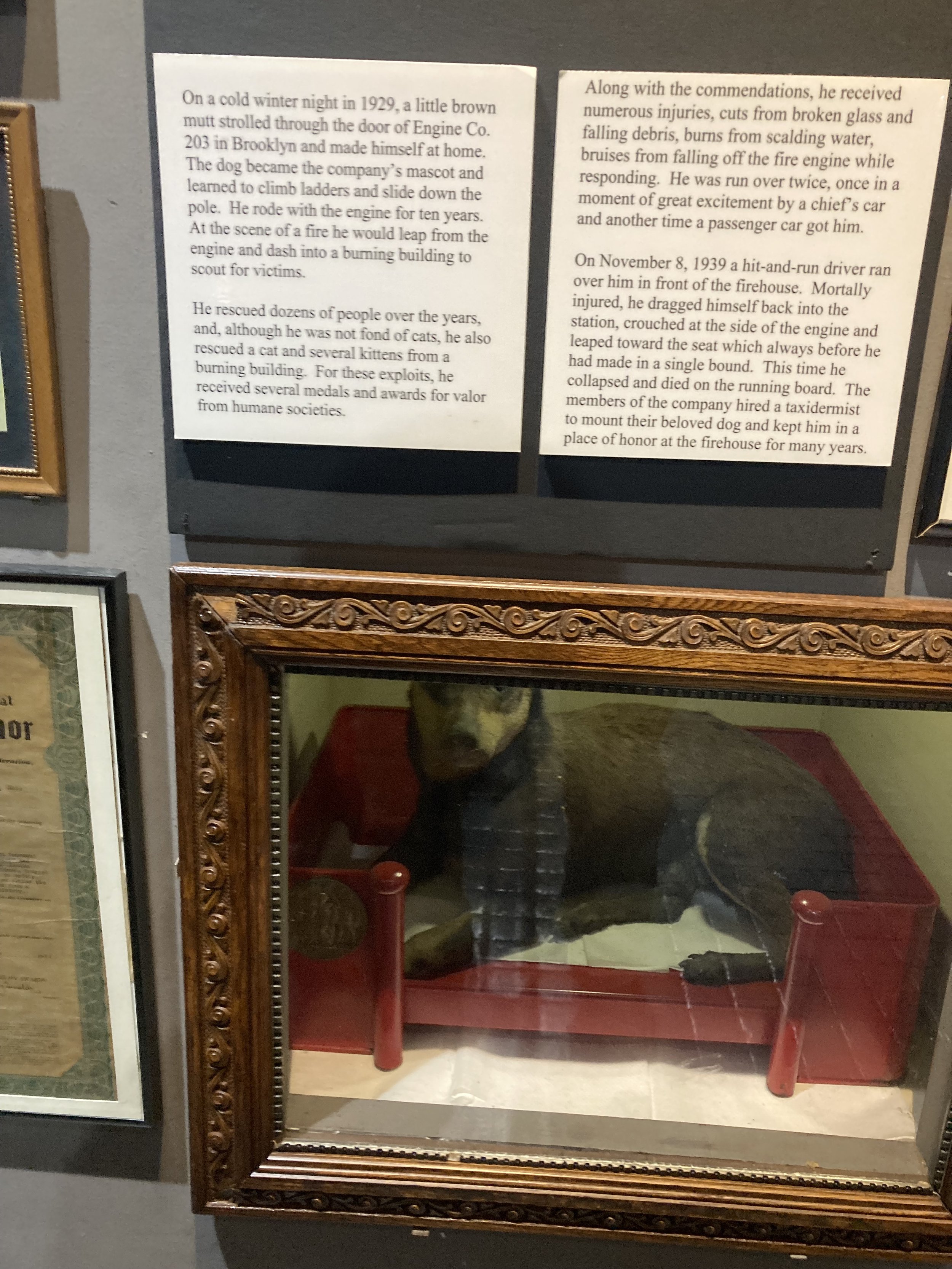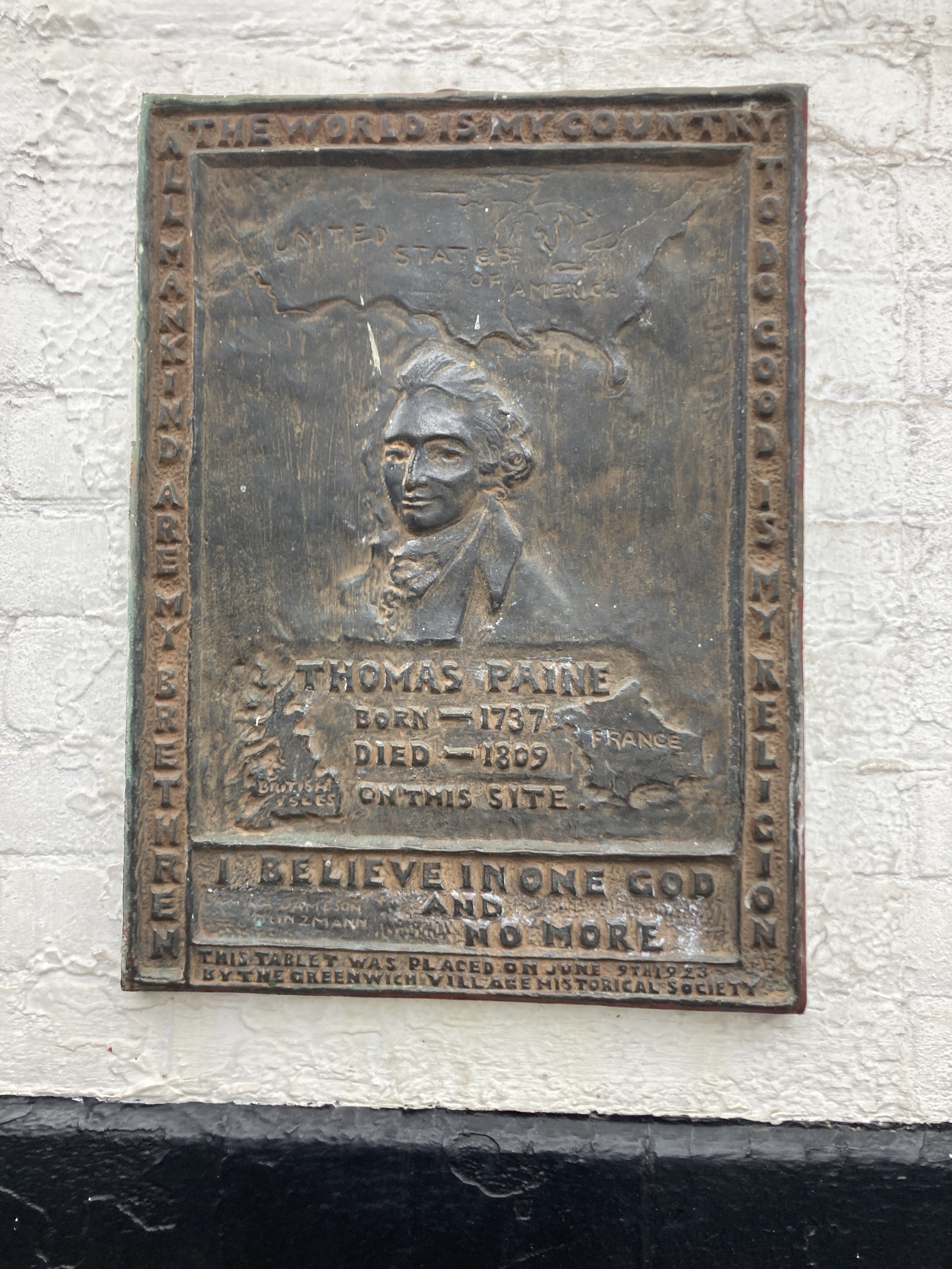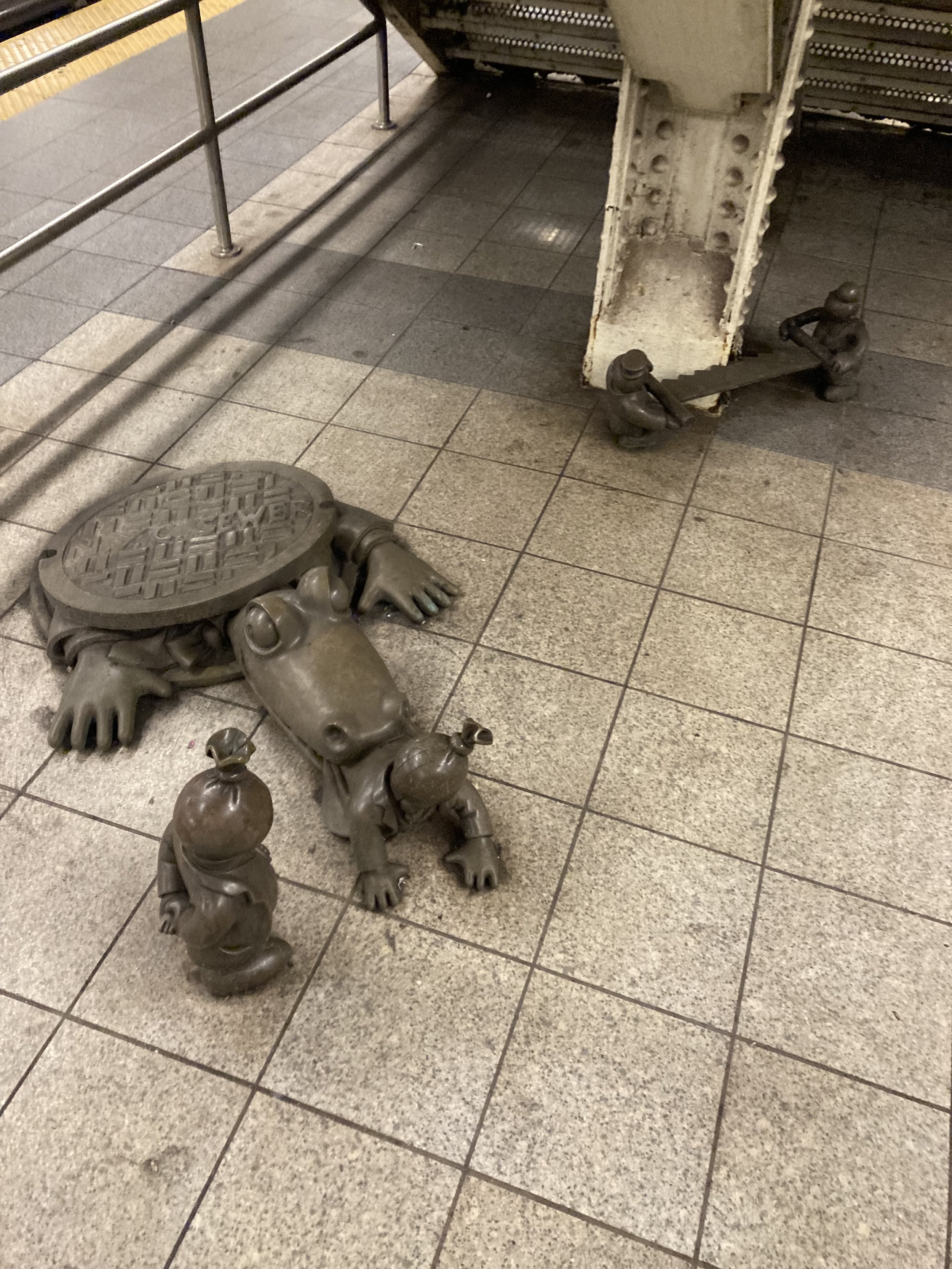Tribeca to Greenwich Village (Manhattan)
WHERE: The lower West Side of Manhattan
START: Chambers Street subway station (1, 2, 3 trains); fully accessible
FINISH: 14 Street - 8 Avenue subway station (A, C, E, L trains); fully accessible
DISTANCE: 2.45 miles (3.9 kilometers)
Photographs by Michael Cairl. Map courtesy footpathapp.org.
Route of this walk, reading from bottom to top.
The days immediately following the year-end holidays are a good time to hit the streets of Manhattan without being overwhelmed by traffic. So on the first Saturday of 2023 I chose a walk without hills, stair streets, or walkable bridges, but with plenty to make me stop and look. I chose a walk that started in what was once just the lower West Side but in the 1980s was re-branded “TriBeCa” for Triangle Below Canal Street, that would end with a zigzag through Greenwich Village. The course was flat and, with some qualifications, accessible.
Coming out of the subway at the intersection of Chambers Street, Hudson Street, and West Broadway, I was greeted by a public plaza in what used to be the southernmost block of Hudson Street.
Looking east on Reade Street from Hudson Street. I saw this painted sign that has baffled me for years.
A block north was the evolution of this neighborhood in one visual: a nicely restored nineteenth century building on the corner, the great Western Union building of 1930 (Ralph Walker, architect), and a modern residential tower designed by Frank Gehry in the right background.
A block north is little Duane Park, one of my favorite spots in the city. The loft buildings on the south side of Duane Street used to be home to wholesalers of eggs, milk, and butter. Such clusters of food wholesalers once were found around Manhattan, near the Hudson River or East River. Eventually, these businesses relocated to modern facilities at Hunts Point in the Bronx.
Leading north from Duane Street is two-block long Staple Street, another favorite of mine. From The Street Book by Henry Moscow (Hagstrom Company, 1978):
The Namesake: staple products that were unloaded there. Under Dutch law that was effective in New Netherland, ships in transit had to pay duty on their cargo or offer the cargo for sale. In New Amsterdam, Staple Street was the marketplace for such goods.
Staple Street is beguiling: narrow enough that one can, and should, walk safely in the street and not on the too-narrow sidewalks. At the north end is the onetime home of the New York Mercantile Exchange.
Staple Street, looking north.
Former New York Mercantile Exchange, Harrison Street west of Hudson Street
From Staple Street I turned right onto Harrison Street and left on Hudson Street. At Hudson and North Moore Streets is a popular restaurant called Bubby’s, with a line to get in for brunch.
The Saturday brunch queue at Bubby’s.
This part of Manhattan used to be home to food wholesaling as noted before, plus suppliers to the maritime industry when the Hudson River shoreline was a phalanx of docks from the Battery to 59 Street, and other light industry. That didn’t prevent individual buildings from having artistic flourishes; witness the Mercantile Exchange and the corner of this building at Beach and Hudson Streets.
At this point, on the east side of Hudson Street is the exit plaza for the Holland Tunnel. This plaza was built on the site of St. John’s Park. Continuing north, cross Canal Street, turn left, and then turn right onto Renwick Street. This one-block street has seen a lot of change in recent years, not limited to the new building on the left.
Renwick Street, looking north.
At the end of Renwick Street, turn left onto Spring Street and cross Greenwich Street. Ahead is a fine, favorite old watering hole, the Ear Inn. It is in a building constructed around 1770 and became the home of James Brown, an African aide to George Washington in the Revolutionary War and, later, a successful tobacco merchant. More history of the Ear Inn is at http://www.theearinn.com/about. When it was built the Hudson shoreline was just to the east of where Washington Street is now and just west of the Ear Inn.
Turning around and walking east on Spring Street, past Hudson Street, I came upon the New York City Fire Museum. I had walked past it many times but had never gone inside until this day. It is completely accessible and is well worth a visit. It has a lot of old fire fighting equipment and other paraphernalia, plus an excellent, heartbreaking permanent exhibit of artifacts from the World Trade Center and a tribute to the 343 New York City fire fighters who died in the attack on September 11, 2001.
There’s a section of the museum devoted to fire house dogs.
From Spring Street the walk continued left (north) on uninteresting Varick Street. I turned right (east) onto Carmine Street for a block, then turned left (north) onto narrow Bedford Street. Crossing 7 Avenue South and staying on Bedford Street, be on the sidewalk on the right side as the other sidewalk is just too narrow. Turn left onto Commerce Street and see the Cherry Lane Theatre, a celebrated Off-Broadway stage.
Cherry Lane Theatre on Commerce Street.
From Commerce Street I turned right (east) on Barrow Street, then left (north) on Seventh Avenue South. This street didn’t exist prior to the IRT subway being constructed in the 1910s. The large number of empty storefronts and once busy restaurants testify to how hard the pandemic has been on small businesses.
Off to the left are Marie's Crisis Cafe and a jazz and blues venue called Arthur’s Tavern. On the facade of Marie’s Crisis was this example of history hiding in plain sight. Thomas Paine wrote a series of pamphlets during the American Revolution under the banner of “The American Crisis” and this is the Crisis in Marie’s Crisis Cafe, not any crisis suffered by Marie.
A bit to the north, on the east side of 7 Avenue South, is Sheridan Square and the Stonewall National Monument. On Christopher Street, across from the park, is the Stonewall Inn, an important location, but by no means the only one, in the struggle for LGBTQ rights that is far from finished. This is one part of civil rights and it is fitting that there is a memorial in this place.
Just to the north on West 10 Street, is a jazz club called Small’s. At one time, when it was owned by a fascinating, kind character named Mitch Borden, it was a BYOB place where, having paid to get in, one could stay the whole evening and hear excellent jazz by little-known performers. A bit farther north is the famed Village Vanguard, a jazz mecca for generations. It is a triangular space downstairs from the sidewalk, the musicians playing in one apex of the triangle. The bar is on the side of the triangle opposite the stage and it was my preferred place to sit, looking out over the tables and perhaps chatting with the bartender.
I turned north onto Waverly Place and then left (west) on West 11 Street, then right (north) on West 4 Street. An intersection of West 4 and West 11 Streets, one might wonder. Only in New York, I suppose.
Timely sign on West 11 Street.
After lunch at Xi’an Famous Foods at 8 Avenue and West 15 Street (terrific food but the seating seems to have been designed for small children), the walk ended at the subway station at 8 Avenue and West 14 Street. This busy station is home to whimsical bronze sculptures by Tom Otterness, starting at the elevator on the street and continuing throughout the station.
My favorite group of sculptures in the station. Two men are trying to saw away the support column. That great creature of urban myth, the New York sewer alligator, grabs someone for its meal while someone else just looks on. Whimsical and unsettling at the same time.
This was a most enjoyable walk. The southern part of the walk had paving blocks that had to be negotiated with some care. Mere steps from either side of the walk was so much more to see. I wanted to put together a completely accessible walk with a lot to see, and I succeeded. I could have lingered at many places on the walk. You might choose to do so.

